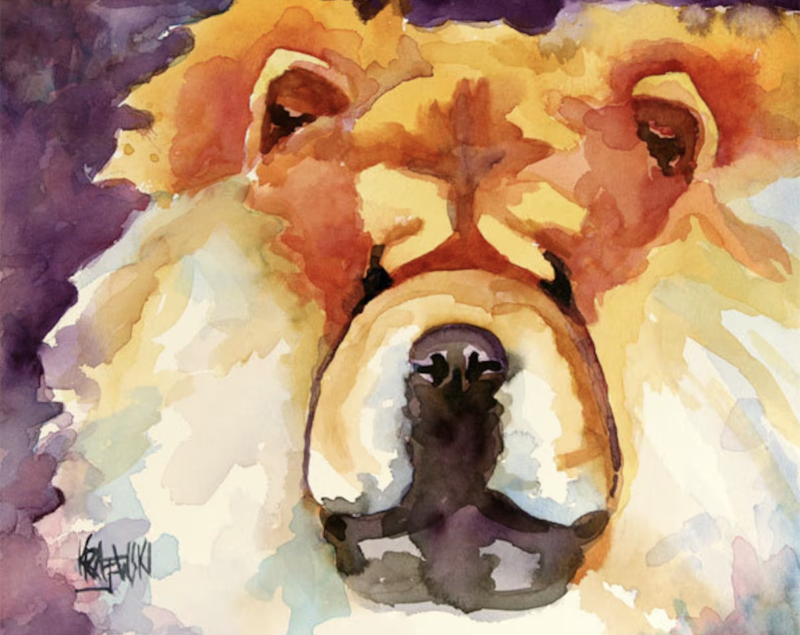
As we write, we’re anticipating the first full moon of the year, and January’s full moon has a vivid name: “Full Wolf Moon.” According to the Farmer’s Almanac, this moon was so named because it comes at a time of year when cold and snow cause hungry wolves to run in packs while hunting, howling throughout the night. This same moon is called by some Native American cultures the “Severe Moon” or “Center Moon.”
Most cultures give names to full moons because of the cultural and historical significance a full moon has to agriculture and traditional folklore. Most of us are familiar with at least a couple of names given to full moons, Blue Moon and Harvest Moon being the two of the most well known. But did you know that every full moon has a name?
We promise to mention a dog at the end, but for now, we share the following monikers that have come from Native American or Colonial American traditions and are geared towards the northern hemisphere for historical reasons having to do with northern hemisphere observers.
February‘s full moon is called the Snow Moon because in most of the north country, February has the heaviest snowfalls. Given that bad weather keeps many hunters out of the fields and forest, it has also been called the “Full Hunger Moon” for obvious reasons.
The Worm Moon is a nod to the ground warming up in March when wiggly earthworms return to the surface. Because many people tap the sap of maple trees around March, it’s sometimes called the “Full Sap” Moon.
April’s Pink Moon is in reference to flowers bringing color back after a gray winter, and because even more flowers return in May, that month’s full moon is called the Flower Moon (also the Corn Planting Moon as this is when farmers traditionally plant corn).
Strawberries ripen in June, so this month’s full moon is called (say it with us), the Strawberry Moon; because roses come into full bloom in most of Europe, many countries call it this the Rose Moon.
The Buck Moon in July is named for the time that buck deer start to sprout their new antlers. August is late summer in the northern hemisphere, a time when folks harvest the fruits of their labor from the gardens and fields they planted in spring. This moon is called the Fruit or Barley Moon, not the Harvest Moon which comes the following month in September when the most important food grains are harvested, and cloud cover permitting, farmers can work under moonlight into the night and get more food stored for the winter.
Hunters Moon or Blood Moon comes in October when hunting season occurs in many cultures. In North America, animals are more easily seen in fields and forests after harvests have been brought in, and trees have lost their leaves.
Though we don’t hunt beavers very much today (they are protected in many areas), traditionally, November was the time when people did hunt them, and so, November’s full moon is the Beaver Moon. The Cold Moon or Long Nights Moon comes in December,
We promised you a dog, and by now, some of you might be thinking that we might mention the National Dog of Peru, the Perro Sin Pelo del Perú, a breed that’s been nicknamed the “Moonflower” or “Moon Dog,” but no. Although we are staying in the folklore and fantasy lane, we mention a different breed.
Meet ‘Fei Fei,’ the heroine of the animated musical fantasy film, Over the Moon, produced by Netflix in 2020. An adventuress, Fei Fei builds a rocket ship so she can meet Chang’e, the goddess who lives on the moon. Fei Fei’s rocket almost gets there, but it begins to fail and just as it’s about to crash to Earth, a beam of energy envelopes it and takes it to the moon.
Though Over the Moon is fantastical, its story about a girl’s passion for science includes important themes having to do with the power of imagination, and the process of loss and grief. As with any good story (our view), there’s a dog, and in this case, it is “Space Dog.”
Space Dog, who lives in space and occasionally likes to bite the moon, is based on the Chinese myth of Tiangou, a dog who eats the sun or moon during an eclipse. Unlike Tiangou who is usually represented as a simple black dog, Space Dog is described by Fandom* as a Chow Chow as large as the moon itself. It is Space Dog’s “noshing” on the moon that accounts for its phases, and only when the goddess, Chang’e, makes the dog spit it out does the moon appear full.
*Fandom is an on-line source for information about gaming, TV, movies, and pop culture.
Below is another piece about the moon and dogs:
Image: Chow Chow by Ron Krajewski appears with the kind consent of the artist
www.etsy.com/shop/dogartstudio
www.facebook.com/ronpaintspets
